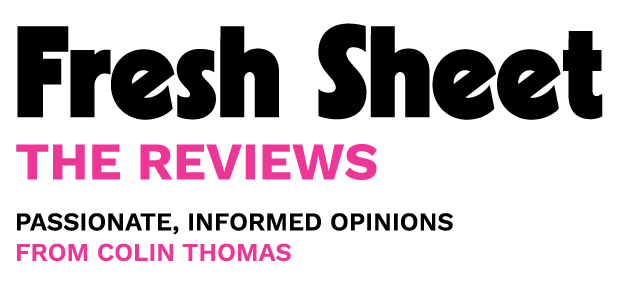When I work on novels and screenplays, I often work with the three-act structure. It’s a useful tool that can really help to focus and enliven your story.
Check out the template below and feel free to apply it to your work.
If the template doesn’t make complete sense right away, don’t sweat; I can talk you through it.
Lately, a number of authors have asked me to edit their outlines—sometimes before they’ve written a first draft, sometimes when they’re preparing a second draft.
If you’d like to create an outline for me to edit, just write a few sentences for each of the steps in the three-act structure; describe the Ordinary World, tell me what happens in the Call to Adventure, and so on. If you’re still in the early stages of developing your story, the Mid-Act Revelation and the Ordeal, might be difficult to identify. Don’t worry about it; they’ll come later. Do make sure to identify your hero’s Act 2 and Act 3 goals, though.
I hope you find this helpful. Have fun!
THREE-ACT STRUCTURE
ACT 1
Ordinary World
– We see the hero’s world as it exists outside the realm of the adventure.
– The Ordinary World may contain an event called the Inciting Incident, which kicks the story into action.
Call to Adventure
– In the Call to Adventure, someone or something demands that the hero take action. In the Call to Adventure, the Ordinary World is disrupted; the hero is presented with an opportunity to make a necessary change.
Refusal of the Call
– The hero refuses to accept the Call to Adventure.
– It’s important to identify why the hero refuses the Call. If it’s because of a particular fear, the protagonist will be called upon to overcome that fear in the story’s Climax.
– Here’s another way of looking at that last point: the reason for the Refusal makes the hero’s vulnerability clear.
– The tension created by the hero’s vulnerability is what makes the story exciting. Will the hero succeed?
– The tension created by the hero’s vulnerability is also what makes the story meaningful. What does the hero have to learn in order to succeed? How does the hero grow?
The Intervening Mentor
– The Intervening Mentor is a parental figure, sidekick, or pal who supports the protagonist in taking action, either through their direct and ongoing presence, or through some kind of message or memory.
– Many characters can be mentors to the hero throughout the story, but only one is the Intervening Mentor, the character who encourages the hero to accept the Call, despite their vulnerability, and cross the threshold into adventure.
ACT 2
Crossing the First Threshold
– The protagonist commits to their adventure and takes action that demonstrates that their adventure has begun.
– This step establishes the protagonist’s goal for Act 2.
– In Act 2, the protagonist pursues what he or she wants.
What is the protagonist’s Act 2 goal?
– It’s important to identify this goal. The story’s action emerges from the protagonist’s pursuit of their goal.
– As the protagonist’s understanding deepens, revisions to the goal will reflect that deeper understanding.
– The protagonist’s deepening understanding will reveal the story’s underlying wisdom and themes. (Don’t try to plan this part! Just let it happen as the protagonist’s goal shifts. Follow your hero’s growing wisdom.)
Tests, Trials, Opposition, and Allies
– The protagonist applies different strategies in an effort to attain the Act 2 goal. Some succeed. Others fail. The protagonist encounters resistance as well as support.
– The protagonist’s struggle creates narrative tension, which is essential to your story.
Mid-act Breakthrough
– Because of a revelation, the protagonist understands the terms of his of her quest more clearly and commits to it more fully.
What is the protagonist’s altered goal?
Ordeal
– Having clarified his goal, the protagonist faces an Ordeal.
– If the Climax of Act 2 is to be negative, this Ordeal will likely resolve positively. If the climax of Act 2 is to be positive, this Ordeal will likely have a negative outcome, which spurs the protagonist on to greater effort.
– You can think of this step as a tension builder, a strategy for making the Act 2 Culmination more dramatic. “Oh!” you might think. “The hero has overcome the Ordeal! Yay! But wait! In the Act 2 Culmination, the hero fails!” The opposite might also be the case: “Damn! The hero has failed to overcome the Ordeal. But now s/he is succeeding in the Act 2 Culmination! Hooray!”
Act 2 Culmination
– At this point, the hero either succeeds or fails in achieving his Act 2 goal.
– This turning point can shift the focus from what that protagonist wanted (Act 2 goal) to what he really needs (Act 3 goal.)
– If this turning point is negative (all is lost), Act 3 will reverse and result in triumph. If this turning point appears positive (triumph), Act 3 will result in failure.
ACT 3
– Act 3 is all about pursuing the deeper objective.
What is the protagonist’s Act 3 goal?
Crisis and Climax
– In the Crisis, circumstances force the hero to confront his or her greatest challenge.
– In the Climax, the hero either succeeds or fails.
Resolution
– In the Resolution, we see how the hero has changed as a result of their journey. Has the hero gained wisdom and knowledge or has the hero become corrupted and defeated?
– We also see how the world has changed (or not) as a result of the hero’s struggle.





0 Comments